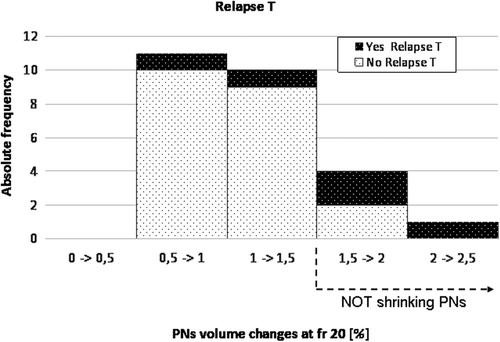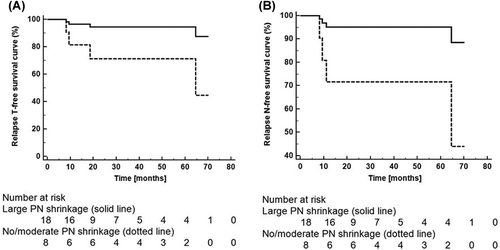Figures & data
Table I. Main patient and tumor characteristics.
Table II. Difference of PET positive volume variation between patient without (group 1) versus with (group 2) relapses in primary tumor (T), lymph node (N) or metastatic (M) location at different timing during treatment (i.e. fraction 10, 20, end of treatment). Mann-Whitney test (*p < 0.10) was used and volumes at different timing were normalized to volume at beginning of treatment (i.e. 1st fraction).


